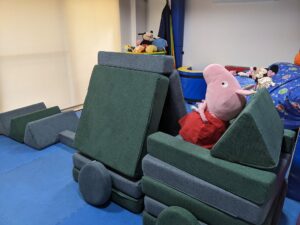
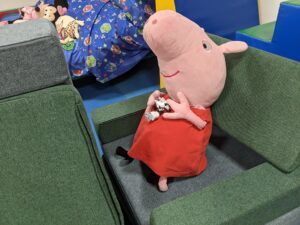
The NooK
If you have been into the Occupational Therapy room recently you may have noticed our newest addition – the NooK!
The NooK is a modular play sofa that can be used to build so many different constructions. We have been using the NooK during both Speech and Occupational Therapy sessions to support children’s imaginative play, as well as to develop their planning, sequencing, and problem-solving skills.
The NooK has also been used in our peer sessions to support the development of communication skills and the skill of working together around a common goal. This is both a practical and creative resource, and we are grateful that one of the wonderful parents from the My Therapy House® community brought the NooK to our attention.
Here are some examples of what you can build with the NooK:
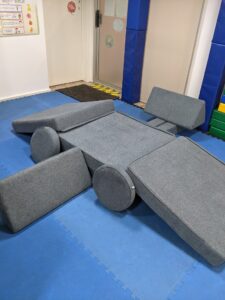
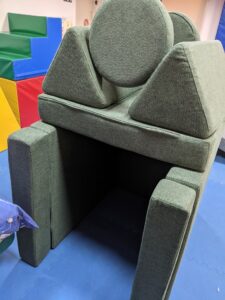
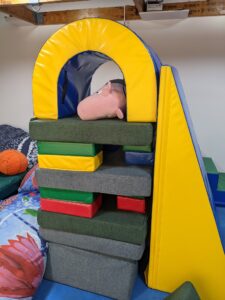
Alternatives at Home
Want to get creative at home and you don’t have access to a NooK?? You can create your own construction with everyday objects you have around the house, including:
- Cardboard boxes
- Chairs
- Pillows
- Blankets
- Sofa cushions
The possibilities are endless.
Learning Language with the NooK
The NooK is a great opportunity to teach language using lots of different types of words. When being a good role model for language learners, we want to make sure we are modelling a variety of types of words. Some ideas of words to use when engaging in creative and pretend play with the NooK are:
- Naming words: Block, cushion, wheel, roof, walls, door etc.
- Describing words: soft, squishy, big, small, round, triangle, square, fast (e.g. fast car), slow etc.
- Doing words: build, drive, crash, sleep (i.e. in the house)
- Location words: Up, on, in, behind, next to, between, under (when building)
- Feeling words: Whoops! Uh-oh! mad, happy, sad
- Social words: your turn, good idea!, try again!
Matching language to what children are doing with their body is helpful when learning concepts like location words and doing words. For example, “you are reaching,” or, “you are under the cushion.” Letting them experience the new concept with their body gives them a concrete example and helps them learn the concept faster. It’s helpful to use short sentences and put stress and emphasis on the word you are modelling for your child.
Matching the language you are using, in the moment, to what the child is engaged and interested in is the best way to be a good language role model!
